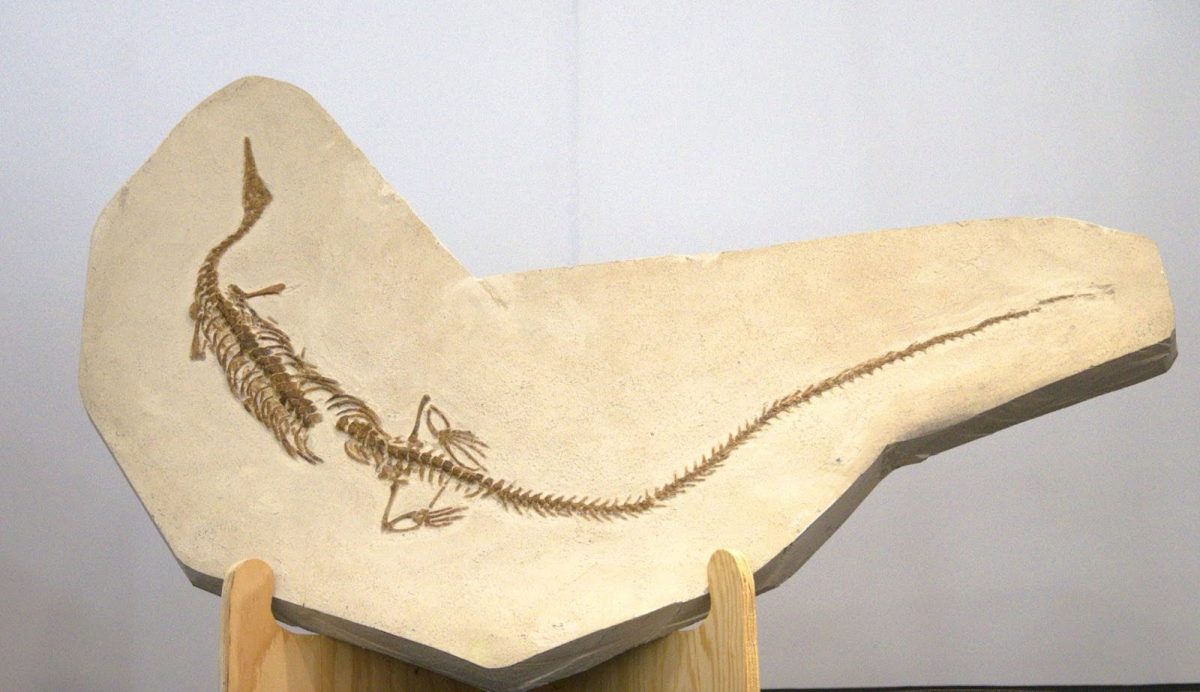Every year, something extraordinary happens in Tucson. Beneath the backdrop of rugged mountains and under an impossibly blue sky, the Tucson Gem and Mineral Show transforms the city into a global hub of geological wonder. Dealers, collectors, scientists and enthusiasts from around the world descend upon this desert town, bringing with them treasures pulled from the depths of the Earth — shimmering opals, ancient fossils and meteorites from the far reaches of space. It is, without exaggeration, the largest and most important gem and mineral show in the world. And somehow, we’re lucky enough to have it in our backyard.
Now, let me preface this by admitting something upfront: I’m a nerd. A full-fledged, rock-loving, fossil-admiring, earth-science-enthusiast nerd. So, yes, I’m biased when I say that the Tucson Gem and Mineral Show is an event that everyone should experience at least once in their lives. But really, why wouldn’t you? Do you love shimmering gemstones and rare minerals that seem to glow from within? Come to the mineral show. Are you fascinated by the forces that carve mountains, form canyons and shape the Earth beneath our feet? This show is for you. Are you captivated by the mysteries of space, by meteorites that have traveled across the cosmos before landing in our hands? Then come hold a piece of the universe. Or maybe you’re someone who marvels at life itself — at the creatures that once roamed this planet long before us — their stories preserved in ancient stone. If any of these things intrigue you, then trust me, you belong at the Tucson Gem and Mineral Show.
However, even if none of that sounds particularly thrilling to you, even if you’ve never given a second thought to a geode or a fossil or a meteorite, there’s something much deeper that this show reveals. It’s not just about shiny things or rare collectibles. It’s about the story of Earth itself.
When I first moved to Tucson for medical school, I knew little about the city. In fact, I knew little about Arizona at all. I pictured an endless, dry expanse — hot, desolate and frankly boring. I worried I had moved too far from home, to a place I might never truly appreciate. But in the years since, I’ve come to realize just how spectacular this place is. Arizona is a land shaped by time itself, a place where you can stand on the rim of the Grand Canyon and stare down into nearly two billion years of history. Where petrified forests turn trees into stone, where towering rock formations tell stories of ancient seas, where fossils emerge from the earth to whisper secrets of a world long before us.
Fossils have always been my weakness. There is something impossibly poetic about them. These preserved relics, pulled from rock and dust, are tangible echoes of the past. Mischievous little trilobites that scuttled across ocean floors half a billion years ago. Towering dinosaurs that once ruled the land before vanishing in an instant of cosmic misfortune. Strange, alien creatures that flourished, then disappeared, leaving behind only their hardened impressions in stone. Fossils are proof that the Earth remembers. That time does not erase all things. That if we listen carefully enough, we can hear the stories of worlds that came before us.
This is why the Tucson Gem and Mineral Show is not just a market for collectors — it is a cathedral of time. It is a place to marvel at Earth’s ability to shape beauty under immense pressure. To hold in your hands the remnants of creatures that lived and breathed in a time so distant it defies comprehension. To be reminded that life, no matter how grand, is always fleeting.
And yet, there is also an urgency to this reflection. If fossils teach us anything, it is that species disappear. Entire ecosystems vanish. The forces that shape our planet — its shifting tectonic plates, its rising and falling seas, its atmospheric changes — are powerful beyond measure. And while Earth itself will endure, there is no guarantee that we, or the countless other species that share this planet with us, will also endure. The same geological forces that have preserved history can also erase it. Climate change, habitat destruction, mass extinction events — these are not abstract concerns — but realities that have played out before in Earth’s long history. And unless we are careful, we risk becoming just another layer in the rock strata, just another set of fossils waiting to be uncovered by whatever comes next.
So, yes, go to the Tucson Gem and Mineral Show for the dazzling displays of opals and amethysts. Go to marvel at meteorites that have traveled across the cosmos to land at your fingertips, but also to be humbled. Stand before Earth’s artifacts and recognize both its power and its fragility. Remember that this planet — this stunning, ancient, awe-inspiring planet — is worth protecting.
Because while the Earth will go on, its landscapes shifting and reforming over millennia, we are the only ones who can choose to safeguard the world as we know it.
And if that’s not reason enough to stop by the show, I don’t know what is.
Follow the Daily Wildcat on Instagram and Twitter/X

Andres F. Diaz is an MD/PhD candidate in the Cancer Biology Program at the University of Arizona. His research focuses on understanding immunotherapies and cellular therapies for cancer, specifically targeting pediatric tumors. Diaz aims to integrate a bench-to-bedside approach in his work, aspiring to be a pediatric oncologist who serves in a global context. In his spare time, he enjoys beer brewing, backpacking and reading science fiction.










